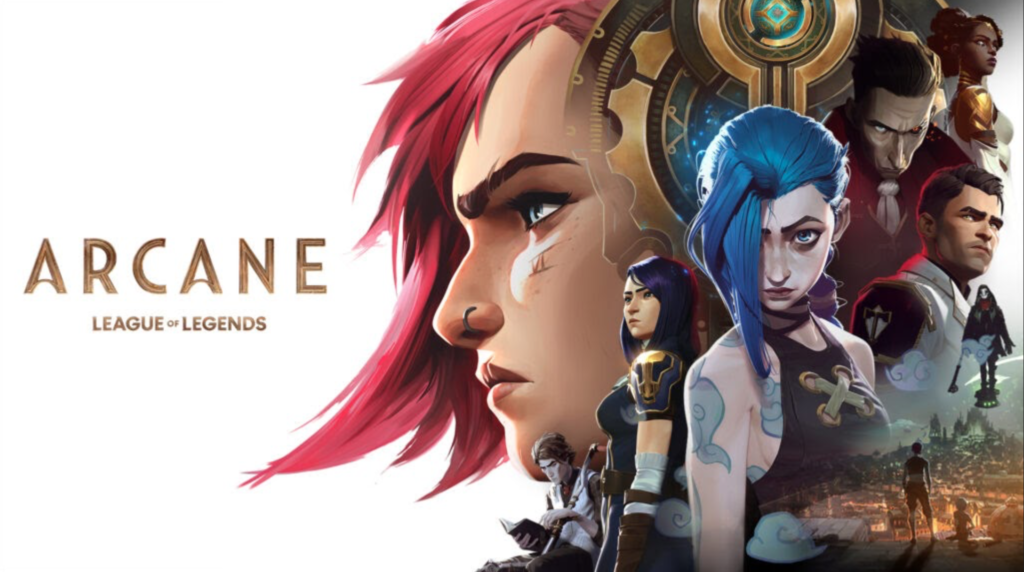After six years in the making “Arcane,” the highly anticipated TV show developed by Riot Games, premiered on Nov. 6, garnering mass positive reception and rave critic scores: 100% on Rotten Tomatoes and a 9.2/10 on IMDb.
Focusing on several characters from the video game “League of Legends,” “Arcane” centers on the conflicts between the regions of Piltover, an upper-class, refined steampunk city, and Zaun, the seedy, chempunk undercity Piltover exploits. Currently, the entire first season, consisting of nine 40-minute episodes, is available on Netflix.
While the first season does end with a cliff-hanger, the show will continue in a second season slated for after 2022.
The plot is deeply complex, featuring several interconnecting stories and developing main characters. From scientists Jayce and Viktor’s development of Hextech, a technology that utilizes magic crystals as its energy source, to the straining relationship between sisters Vi and Powder, plot points become increasingly connected and ultimately factor into the overarching story: the conflict between the two sides of the city.
While the first season does end with a cliff-hanger, the show will continue in a second season slated for after 2022.
“Arcane’s” plot stands out because of its character development. All the characters have cohesive motivations and believable actions, with even the antagonist of the show, a meticulous, idealistic drug lord named Silco, having a sympathetic character arc. Despite the already-known lore of League of Legends probably being able to predict the show’s ending, “Arcane” is still able to maintain high dramatic tension by introducing new, compelling characters and showing how characters transition into their present selves. (In fact, the show might even be better if you haven’t played the game.)
For example, although the future of sisters Vi and Powder are already described in their established character lore, the show closely examines their rocky relationship brought on by the circumstances that force them apart, such as a childhood traumatic experience and the influence of Silco, who serves as Powder’s adoptive parent.
The visuals of the show, which were crafted for over six years by French animation studio Fortiche Production, are expectedly gorgeous. This is Fortiche’s longest product, as their previous works had all been short music videos or trailers, including the hit “K/DA – POP/STARS,” which currently has 486M views on YouTube. Fortiche’s director of animation Barthelemy Maunoury explained to the Mashable, an online entertainment news website, that there was a balance of 2-D and 3-D animations. Many of the visual effects like explosions and tears were digitally hand-painted and 2-D to reinforce the illustrated, painted visual of the show.
Powder’s hallucinations are especially impressive, resembling childish drawings and audibly shrill echoing noises, stemming from her childhood trauma that is explained in the first three episodes. Similarly, another fight scene she appears in carries similar weight. The initial flashback to their childhood mockfights contrasts in art style with the rest of the show, appearing in high-contrast light, before snapping back to the present with quick-paced, darkly-lit fighting.
Aside from graphics, the character’s designs and costumes and the overall environment are intricately detailed. Multiple characters needed to be created for the show, and each were given different appearances that reflected their circumstances in the show. For example, the affluence of the two cities is reflected in the symmetry and asymmetry of its architecture and clothing styles.
Though the show is centered around the characters in “League of Legends,” its cohesion, character development, visuals, and music provide for an experience also enjoyable for viewers unfamiliar with the game.
























